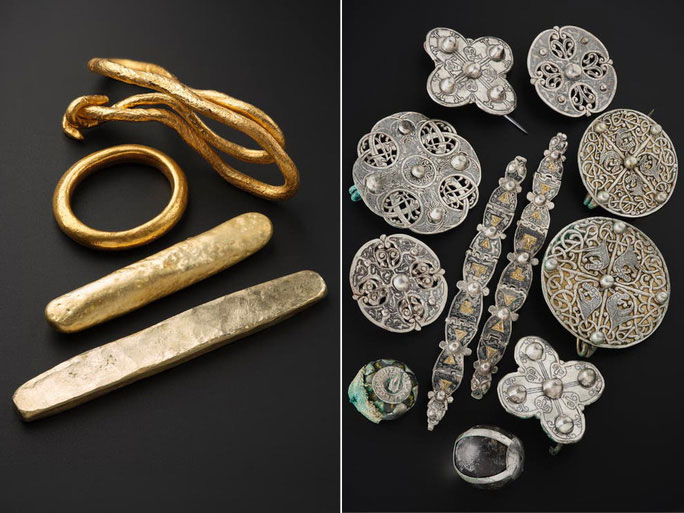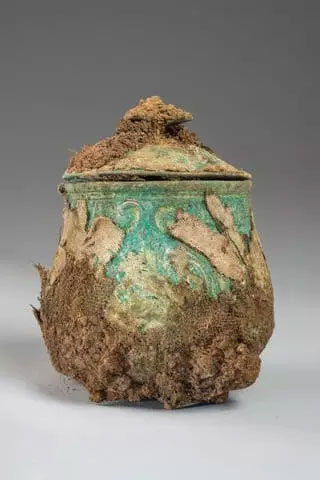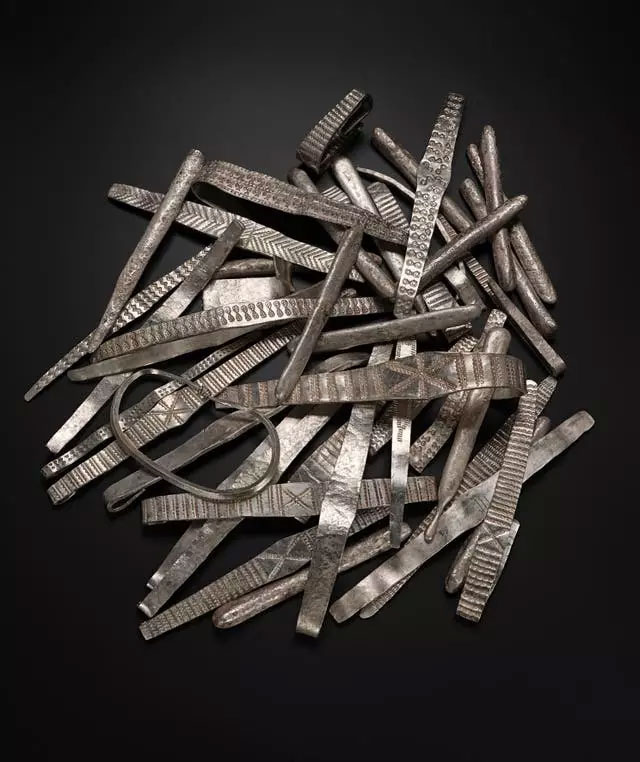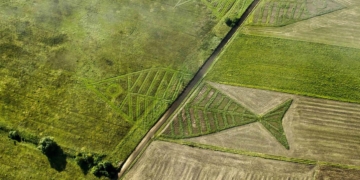Scientists spent a staggering three and a half years analyzing the Galloway Hoard, which includes a vast array of intricately crafted gold and silver jewelry discovered by a metal detectorist in Scotland.
According to The Independent, archaeologists assert that this is the richest and most complex Viking treasure ever found in England. The first artifacts were uncovered seven years ago by an amateur metal detectorist, or “treasure hunter.” Researchers took considerable time to excavate, restore, and analyze these items, with studies aimed at uncovering their origins and historical significance extending over 3.5 years.

Some artifacts from the giant treasure found in Scotland – (Photo: National Museum of Scotland).
The research team led by the National Museum of Scotland (United Kingdom) conducted an “intensive investigation” using various methods such as X-rays, CT scans, microscopy, and molecular analysis, revealing that this treasure consists of two very different categories.
The manner in which they were buried also reflects this distinction. In the treasure pit, the upper layer comprises silver ingots and beautifully crafted silver crosses. Beneath this “secular layer” lies a layer of gravel up to 8 cm deep. If this gravel is excavated, one would discover many other peculiar artifacts, including gold and silver ingots, as well as highly valuable religious relics, not only for their precious metals but also for their sacred significance.
Initially, the treasure was thought to belong to the Vikings, but the underlying layer indicates it belonged to a different group of people, buried in two main layers to evade Viking searches. The burial occurred around the year 900 AD.

An exquisite vessel believed to be used in sacred rituals – (Photo: National Museum of Scotland).
Among the sacred treasures below, the most notable are two spheres of earth mixed with ultra-fine gold dust, seemingly created as a relic. The soil used to roll in the gold dust may have been sourced from locations associated with the birth, baptism, or burial of Jesus Christ. A blue glass bead may represent an “Anglo-Saxon bead,” a type of relic linked to an unidentified saint. Additionally, there are various charms in the form of crystal spheres.

Intricately crafted silver jewelry, immensely valuable for the historical secrets they contain – (Photo: National Museum of Scotland).
Two unique vessels were also found: one made of silver and gold-plated in a Persian or Middle Eastern style, and the other made of crystal with a gold spout, believed to be used in the most formal rituals. Moreover, they discovered silk fragments, which represent the earliest evidence of silk found in Scotland.
Commenting on the discovery, Dr. Alex Woolf from the University of St Andrews stated that this peculiar treasure is “a very rare opportunity to capture a moment in the long history of the Viking Age.“





















































